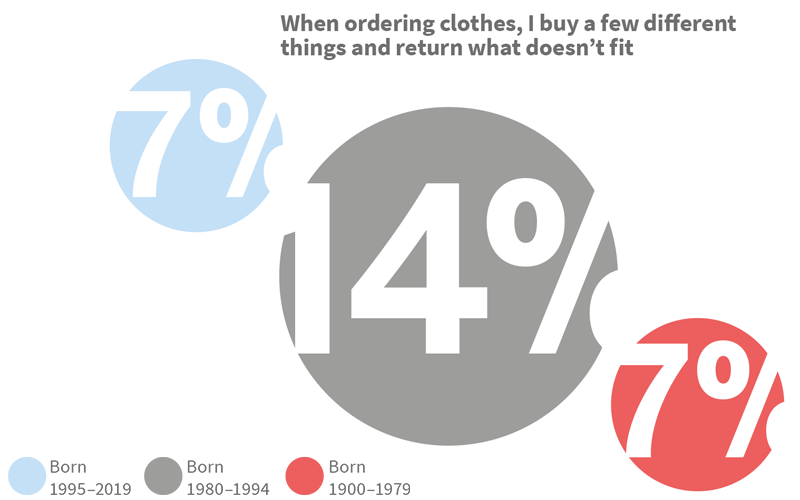We love local
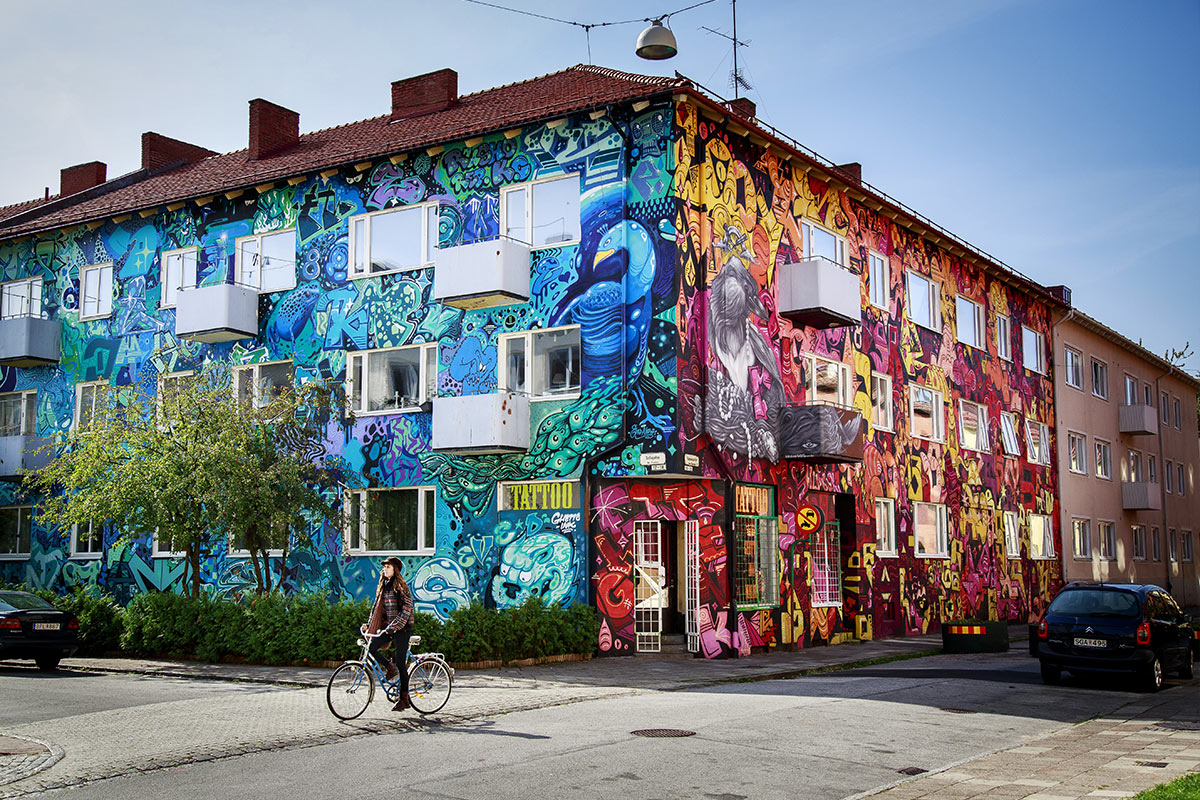
We love local
Schibsted’s newspaper Aftonbladet is expanding its local journalism, beginning in Malmö in southern Sweden, in spite of previous failures in the field. But the right time may be now, mainly because of a new, scalable technique.
I was 16 years old when I for the first time walked into the editorial office of the local newspaper Folkbladet in Idrottsgatan in the town of Norrköping. I had got myself an internship at the paper that was to become one of my much-frequented places during high school. I forced my friends to appear in my own Youth spread every Tuesday. I interviewed them and their buddies about their first love, about being a lesbian in the small town of Valdemarsvik and about anorexia. My whole world was concluded on a two-page spread every week. Sometimes we hung around after work smoking in the basement waiting for the first printed copies. Yes, the printing machine was just two stairs down from the editorial office.
Local is near. It is journalism about bumps in the road, it is about the local football team and about bands playing in basements, letter to the editor and death announcements, but also investigative reporting about the petty wangling and greediness among local politicians.
More important than ever
Local is more important than ever for journalism. In the age of Trump, fake news, Cambridge Analytica and Facebook, journalism is one of the few means at hand to rebuild trust, to get closer to the reader. Stockholm knows precious little about Malmö. People in Malmö know that. Here we need to shorten the distance between towns and City and perhaps sometimes between small town and town. It depends a bit on how far the technology can take us.
The campaign in Malmö consists of local voices, local front pages and reporters in place – all of it in order to give people in Malmö a better offer. But the editorial staff is also helped a lot by new tech, not least in the form of robots writing about traffic, real estate and local football.
Our ad offices are prepared to take on the American giants in the fight for the local money.
When I moved to Stockholm and a temporary summer job at Svenska Dagbladet I had been at several local newspaper branches. But the one that left the biggest mark in me was the sister paper of Folkbladet, called Östgöten where I worked when I was a student. As a young journalist with a “calling” I learnt that the journalism was depending on revenues even though the journalism must be independent I was there the day the last issue of Östgöten was published and had a funeral beer surrounded by men in tears. The paper had existed in Linköping since 1873 and Rolle in the reception knew half the people in town. Today Folkbladet has moved away from Idrottsgatan. It is nowadays owned by the competition, the paper NT, and the two groups of journalists share the canteen.
Local is expensive. It is not difficult to start a local paper. The difficulty is to assure that the costs aren’t growing too big. Still harder to make it profitable. But now there are three main reasons for Aftonbladet’s chances to succeed to be good: users want local content; technology makes the venture possible; there is money to collect.
Indeed, the fact that the users want the content is nothing new. During my whole life as a journalist, the readers have said that they were interested in local news. The question is how much they are prepared to pay for it. Local papers are putting vast resources into digital subscriptions giving readers access to the full content, a business model that is probably right for them because their users are accustomed to paying for the paper and it is hard for these local papers to finance their content with advertisements since they cannot really offer the digital reach.
Aftonbladet is recommending that one charges for journalism but there is still a group that is expecting free news and currently choose to get their updates elsewhere. The growing American giants are an apparent alternative, but this is where Aftonbladet has a role to play. Aftonbladet shall update Sweden and our business model (Freemium) is updating news for free online, while charging for the in-depth features. Our local offer means that our readers can easily, and without paying, access our local content. We are not building any separate app, we are not building a new brand. Instead, we ask our 3.9 million unique daily readers if they also want to have an update about what is happening in their community.
The technology can be used in every city
Technology is an important prerequisite for our campaign, but development has a high cost as well. Luckily, the highest costs arise in the beginning, because the same tech that has been built for our upstart town Malmö can be used for every place in Sweden and it takes only one day to implement. The same goes for our robots. They are already trained. We only have to connect more APIs for them to start writing about places like Kiruna, Uppsala and Västerås. Our campaign can only be worthwhile if it can be scaled up to other places.
Tech has also given us advantages in other fields. A new tag structure affects not only how we can trace and structure old articles for local use, it can also enable our drive to have more niche material. It also gives us new possibilities for automatic updating of articles.
Businesswise, the local ad market is big game. The local papers cannot any longer offer the advertisers enough reach, neither in print nor online. A digital enterprise such as Aftonbladet with its wide reach has reach to offer. So can Facebook and Google but we claim with vigor that we have a better contextual environment and that this will be increasingly important ahead. Furthermore, we already have 12 local advertising offices all around Sweden. They are prepared to take on the American giants in the fight for the local money. It is primarily in the towns, where we have established a local sales organization, that it is of interest for Aftonbladet to invest.
At the same time, we do not only see a traditional advertisement deal. We are hoping for a large part of the revenues to be converting deals where we send valuable traffic to other local companies and services. Here, we already work with Schibsted’s Growth Unit that is offering the users smart digital services. Through Aftonbladet the readers can receive relevant content together with local offers. So far, we have integrated Klart.se and Let’s deal. Next in line are Blocket job, Yepster and Mötesplatsen. If we can create a good content and a good user experience we believe that the chances – and we learn a lot during the journey.
Thanks’ to new tech, it has never before been so easy as now for a national paper to expand its local journalistic coverage. There has never been such strong demand from the market. And maybe it has never been this important to get closer to one’s readers. Knowing this, Aftonbladet is going in for local, starting in Malmö.
It was simply too important to not dare testing. Again.

Lotta Folcker
Managing Editor, Aftonbladet Labs
Years in Schibsted
5
My dream job as a child
Punk rocker and farmer
Journalism in the age of rage

Journalism in the age of rage
The disruption of media business has fundamentally changed and challenged journalism. Karin Pettersson, Director of Public Policy at Schibsted, lists five lessons you need to learn as a journalist today.
The news media industry has long lamented the broken business models that followed the digital revolution. Today, 70 percent of the digital advertising money goes to Facebook and Google and media companies are struggling to reinvent themselves through digital subscriptions. But the disruption hasn’t only affected advertising. It has also, fundamentally, changed and challenged journalism itself.
Historically, journalism has played a central role in shaping public discourse. News organizations have served as gatekeepers and chosen what to amplify. They have always been good at catching the audience’s attention and driving engagement. It has, however, also been about ethics and purpose. But the new public sphere has a different logic than the old. Today, journalism is just one of many actors providing information on what is going on in the world and exists as one of many providers of content in an ecosystem where lies travel faster than the truth and that is optimizing for anger, fear and strong emotions.
In this new world, journalism needs to change, and journalists need to learn about the landscape and avoid the pitfalls. If we don’t, journalism risks becoming a mirror to the anger-driven social media logic – instead of a counterweight on the side of truth and reason.
Given these new challenges, here are five lessons for journalism in the age of rage:
1. Don’t get your news, angles or sources from Twitter
Twitter is, compared to the bigger social media platforms, a small shop. But in the news ecosystem it is hugely important, and unfortunately often in a destructive way. Journalists, politicians and pundits are overrepresented on the platform, and so are propagandists and manipulators. Still, many journalists still spend a disproportionate amount of time on Twitter, looking for angles and topics. Since the platform is easy to manipulate for anyone with access to money or a network of bots, this makes them easy targets for manipulation.
Twitter also distorts journalism in more subtle ways. Journalists love engagement. Due to the nature of the platform, the content that journalists get the strongest reactions to on Twitter tends to be variations on the big topic of the day – the stories that everyone already is covering. When journalists spend too much time on Twitter, this can lead to a dumbing down of coverage in a time when what we need is independent, thoughtful journalism looking for the untold stories.
2. Don’t be a useful idiot
The tools of social media were built to connect people and give them tools for expression. It was never the plan, as American tech journalist and thinker danah boyd writes; that these “tools of amplification would be weaponized to radicalize people towards extremism, gaslight publics, or serve as vehicles of cruel harassment”.
That is, however, what has happened. The hard part for journalists, is how to learn to avoid to become useful idiots playing into the hands of those using the platforms to amplify their agenda. To do that, journalists need to understand how manipulation works on social media.
danah boyd uses the example of the anti-Islam pastor Terry Jones, who in 2010 began using social media to publicly threaten to burn the Quran. His goal was to attract the attention of mainstream news media to promote his congregation, which had around 50 members. Finally, a network of bloggers started to write about him, and finally Secretary of State Hillary Clinton issued a statement condemning him, which led to a massive media coverage. When he finally burned the Quran, the event was covered by every news outlet. The incident led to riots in Afghanistan, resulting in the death of 12 persons.
The question is: was it necessary and important to cover this spectacle? Should the media report on racist provocations from marginal political figures?
3. Political attacks vs relevant media critique
The architecture of the new public sphere makes life harder for journalists. But is also makes their job more important than before. It’s harder, because they can’t single-handedly set the agenda. But also because the undermining of journalism is a central part of the political program of many right-wing populist parties currently on the rise.
The attacks on journalism from Donald Trump in the US, Rodrigo Duterte in the Philippines and Victor Orbán in Hungary are not isolated events. They are part of pattern. The undermining of the free press is at the center of the political agenda for authoritarians across the globe. It is a difficult balancing act, to on the one hand be aware of the fact that journalism is under attack – and at the same time stay open to justified criticism.
4. Better coverage of big tech
The rise of big tech is one of the most important stories of our generation. Facebook has over 2.3 billion monthly users and YouTube last year had 1.8 billion logged on. The majority of Americans get their news from social media and the same is true of most European countries. Never in the history of humankind have companies existed with such reach and impact on information and human communication. These new global superpowers need to be scrutinized and reported on, not only from the “tech” angle. Their operations affect democracy, innovation, politics, and the coverage needs to reflect that.
5. Get used to the hatred
Journalists that learned the trade in the old days are not used to the hatred, criticism, threats and aggression directed towards them that flourish on social media and elsewhere today. Since a large part of the attacks are politically motivated, it is unrealistic to believe that they will simply go away. Instead, journalism needs to learn how to thrive and stay focused in this new environment. Individually, journalists need to find the strength and the motivation to go on, without retreating or becoming overly defensive. On an organizational level, editors and need to learn how to deal with the stress and psychological pressure that follows, and media organizations should set up smart and efficient security routines for their employees if they haven’t already. At the end of the day, the attacks are, in a way, a testimony to the importance of the work journalists are doing. (I don’t know how much that helps, though.)
Good journalism has never been as important as now, and never as hard. Journalism can and will survive. But it needs to learn how navigate in a new environment.

Karin Pettersson
Director of Public Policy
Years in Schibsted
9
My dream job as a child
Librarian
Rethinking organizations

Rethinking organizations
Leave the old hierarchical organization behind! It’s time to create workplaces for the future – to enable innovation.
Just like business models, organizations need to disrupt themselves to be sustainable in a world of hypercompetition and constant change. Future proof organizations transform from hierarchical constructs into open, interconnected networks populated by a fluid workforce and values of transparency and immediacy, just like the world-wide web. This is how organizations will foster an innovative culture for the new generations.
Innovation is the fuel for renewal and the key to reinvent and sustain ourselves. To succeed in the future, organizations must regard change and innovation as their core activities. Those who will be most successful at that, will be the winners. Yet, cracking the innovation code is not easy. “Humans are creative. Organizations are (mostly) not,” says Gary Hamel, one of the world’s most influential and iconoclastic business thinkers. He refers to studies by McKinsey & Co where 94 percent of executives argue that although innovation is hugely important, their organizations are not good at it. Why?
Hamel and many other leading strategists, argue that we are stuck in old traditional thinking when it comes to the organization. The “organization” as a construct has been unchanged for nearly 200 years, since the industrial revolution and was crafted by people living in the mid 19th century. It was designed for control purposes, to create efficiencies and effectiveness in a completely different competitive landscape when skill sets were totally different. Paradoxically, we can argue that organizations are failing to innovate because we are failing to innovate the innovative organization which is fit for the future. To understand what lies ahead – let’s take a look at some workforce trends facing us.
Millennials taking over
We know that millennials soon will represent 50 percent of the workforce and that the millennial generation differs from Baby boomers and Gen X in several ways that will alter how people work. We know that millennials want flexible, short-term project based, impactful work that promotes learning and variation. Millennials are purpose-driven, multi-tasking digital natives, but also self-centered, easily bored and disloyal employees.
Millennials want to work in self- organizing teams where they have a true impact on a cause that is meaningful to them. Their leaders need to be meaning-makers and give them autonomy. They want to learn continuously in the flow of life. They want constant feedback, reward for performance and to frequently change projects and roles.
In their urge to learn, an increasing number of workers are no longer climbing the corporate ladder but rather choosing to change employers or even careers every few years. In a world of shortage of talent, why hang around? A US-based study indicates that the millennial generation is likely to have twice the number of jobs throughout their careers compared to their previous generation. Those younger than 34 years of age, said job-hopping would actually help their careers.
Rethinking the management playbook
Traditional management principles aimed at maintaining control and create efficiencies typically were established with the perspective of the organization as a hierarchy, meaning a system in which members of an organization are ranked according to relative status or authority. In other words, a system to effectively organize a command-and-control regime. It typically involved management control practices like division of labor, talent specialization, standardization, formalization, role descriptions, annual appraisals and systems thinking in reward practices. And yes, although these practices do support the creation of efficiencies – they are readily blockages to agility and thus innovation.
Take the annual appraisal. Many a research have concluded that this exercise is out of date, as it has minimal or no impact on performance, engagement nor growth for the individual being appraised. In our era, employees need and want instant and continuous feedback. In future oriented organizations, leaders have regular check-ins with their employees where the focus is forward looking and focused on learning and development, not looking backward on past performance. In future oriented organizations, performance management is meant to foster positive emotions for the future: personal visions and dreams. Career planning in the future will be focused on learning and flexibility for the individual. Reward will move from systems and rule based thinking to a mechanism that reinforce learning and development. Reward will become growth oriented, individualized and transparent.
Leadership as a Service
Leaders need to be meaning makers in a world driven by purpose and meaning. “Servant leadership” may well be the new paradigm. The philosophy is based on sharing of power. The leader is there to serve the employees (rather than the opposite), to put the needs of the employees before anything else (even the customers) to help them grow, learn and perform at their best. The servant leader’s main focus is the growth of his or her people. Through growth of employees, the company also grows. HCL Technologies, an Indian fast-growing tech company with 8 bn USD annual revenue and 137.000 employees across 44 countries, is practicing the philosophy. HCL is driven by Ideapreneurship. An ideapreneur has the licence to ideate and they describe their culture as a “grassroot movement that has rallied the whole organization” behind their innovation agenda.
Self organizing teams
Self-organizing teams are key to develop agile organizations. A self organizing team doesn’t have to wait for a manager: they assign their tasks and how to work to themselves. They take accountability for their work. For such teams to truly succeed, some principles must be in place like rules for teamwork, required skill set, competency development, commitment to deliver, trust and respect. Unfortunately, I have seen many enthusiastic self-organizing teams that have failed because leaders (including myself) have underestimated the necessity for good coaching and investment in training needed for the teams to succeed.
Diversity and Inclusion needed!
Diversity entails much more than the dimension of gender. There are diversities in terms of age, sexual orientation, education, ethnicity, religion, national origin and in terms of personalities, emotions, thought patterns, behaviors. As our world and our competitive landscape becomes more complex and diverse, so must we as organizations if we are to keep up with the world around us and be able to understand and deliver what it wants from us. Diversity in the workplace gives us the opportunity for new perspectives, increased creativity and more innovation. In the future organization, diversity and inclusion are part of the DNA of sustainable companies.
The future of work is humanistic and purpose-driven
Hamel argues that it is time for us to create organizations that are fit for human beings of our time. In HR communities we talk about the emerging “social enterprise” which requires nothing short of full-scale reinvention. Future organizations must put humans at the center of their business strategies and bring meaning back to the workplace – that’s how the organization will thrive and sustain through innovation and growth.

Mette Krogsrud
EVP People & Corporate Affairs
Years in Schibsted
6
My dream job as a child
Air hostess
Meet our people
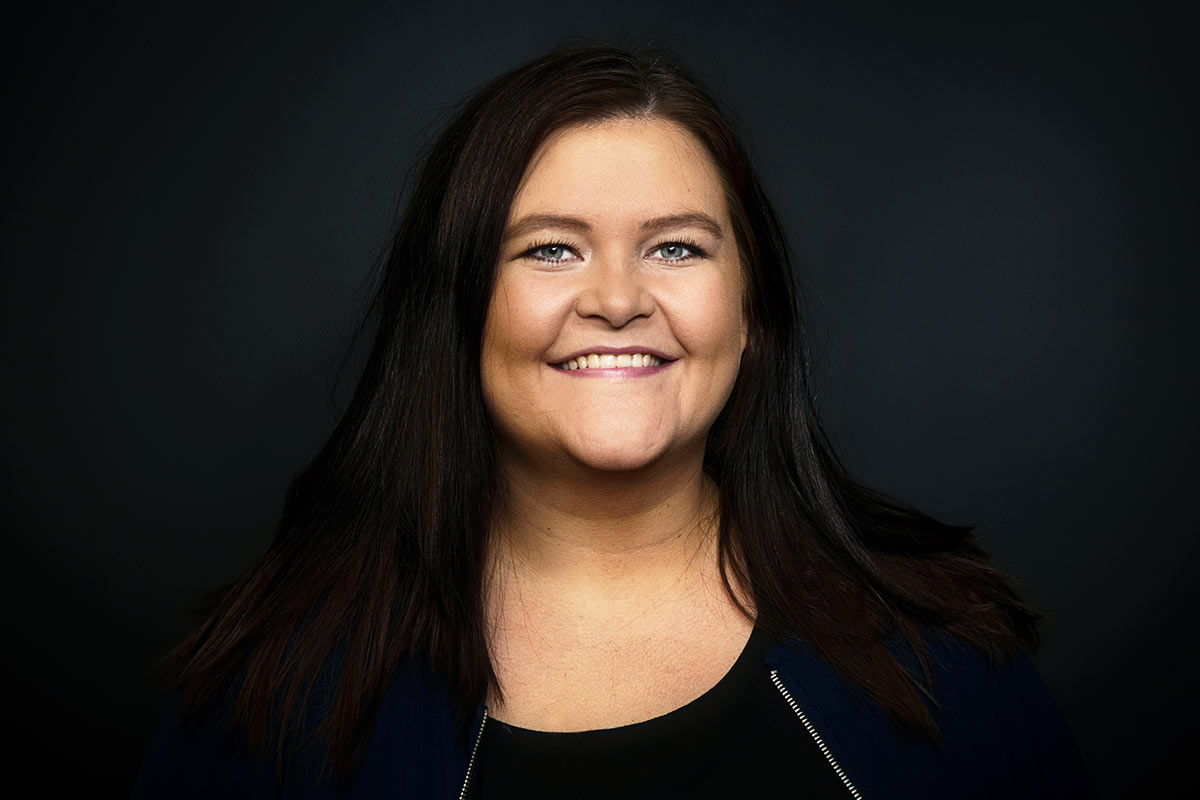
Meet our people
Camilla Brække is bringing Verdens Gang out in the public space, working with voice and visuals. Meet her, Fredrik Hammarstedt, Ida Nilsson and Martine Stolp – some of our Schibsted people.
What if you could get news from VG on screens in the subway or in the bus stand? Camilla Brække is head of a project for sound and visuals that’s looking into how to make VG more present in the public space. But it all started indoors.
“We were eager to provide news for Google Home Assistant, but soon realized that the audience is still very small in Norway. That’s when we changed focus and started working on a product that works on several platforms,” says Camilla.
Basically, her team is making daily video news broadcasts in a simple format that can be produced by just one person. There’s a camera at the VG news desk and a VJ can just start recording at any time.
The content has also changed as the project has moved forward. In the beginning they focused a lot on always being first to report, but then ended up with a lot of text on still pictures. Now they’re trying to simplify angles and messages to adapt to the format and the concept.
“We have a new type of infographic that is much more to the point. If we want to catch people’s attention out in the city, we need to be very direct,” Camilla explains.
At the moment the team is trying out the product on VG’s start page and soon it will be on Snapchat. But the overall goal is to move out into the city. When becoming more and more digital, newspapers like VG have lost presence outdoors, losing attention for their brands. This could now be about to change, with VG’s news displayed at train stations, airports and out in the city.
Camilla has enjoyed how the project has developed – from starting out with this one idea of content for Google Home to becoming something completely different and larger. “It is also very fun to focus on the visuals – and not least to be allowed to be a bit playful.”

Years in Schibsted: 1.5 My dream job as a child: Truck driver
Cooperation is key in the office
One morning when Fredrik Hammarstedt worked as facility manager at Telenor’s office in Stockholm, he sat opposite a man he had never seen in the subway. Not unusual you might argue. But when they both left the train at Slussen, it turns out they worked in the same office and had done so for years.
“The main reason why we have an office at all is to meet our colleagues. If you do so naturally on a day to day basis, the thresholds are a lot lower the day you’re going to collaborate,” says Fredrik.
He now has the same job at Schibsted in Stockholm. Fredrik believes that you need to look at offices in a holistic way. Starting with those basic questions about why we even have an office and how you create one that people really want to go to every morning. Collaboration is a keyword – as is culture, being agile and of course technology that enables you to do your work. One thing was very important to Fredrik to implement when he began.
“You need a human touch and a management system with a heart.
Filling out a form is not enough. That’s why we have floor managers who very quickly can assist the different needs from our different companies with a human touch.”

Years in Schibsted: 1.5 My dream job as a child: Hairdresser
“It’s important to teach kids about tech”
One week last June, the atmosphere in the Schibsted offices in Stockholm and Oslo changed completely – kids aged 8–12 years invaded the buildings. Kids Coding Camp is introducing kids to tech and coding and is arranged by the Talent Acquisition team at Schibsted. The concept was first arranged by Finn and now Schibsted is copying it with pride.
“I feel as if I have the world’s greatest job when working on this. It’s important to teach kids about tech – and not least to make girls see that it’s fun,” says Ida Nilsson, employer branding specialist and responsible for the project.
The kids work in a program called Scratch – which is a tool developed for children – and their teachers are students from KTH (the Royal Institute of Technology). On examination day they had created games, quiz, animations and much more.
“Already on the second day when I was hanging around and someone asked if I could help – I didn’t have a clue,” confesses Ida.
On this first camp, children of Schibsted employees were invited. Next time, in February 2020, it will grow to an external integration

Years in Schibsted: 6 My dream job as a child: An actress or
TV host on children’s television
Events that build loyalty
In a time when journalism needs new ways both of earning money and of building loyalty, the Norwegian newspaper Aftenposten is hosting events that reflect the editorial content. Martine Stolp is a producer for Aftenposten Event, and she is bringing the journalism out on stage.
“Our job is to help making sure that the readers Aftenposten have today stay on, recruit new readers and to raise turnover,” Martine explains.
Climate, tech, culture and news are the main themes. In December 2019 Aftenposten arranged a conference named ”Rethinking”, together with Schibsted. Famous guests like tech futurist Amy Webb and Alex Stamos, computer scientist and former Security officer at Facebook attended (read interviews with them on pages 10 and 15).
“I’m learning a lot from arranging these events – both in working with the editorial room and the expert speakers.”
Martine’s team will also arrange a sports event together with VG and they have developed masterclasses for Aftenposten for education on writing, presenting and podcasting.
“I think we could do even more on these themes across the whole of Schibsted, we have the skills,” says Martine.
An idea that started a movement

An idea that started a movement
A digitized bullet board changed our shopping habits for ever – and started a movement for a more sustainable society. Today Blocket has five million visits every week and sister sites all over the world.
1996. Henrik Nordström, born and raised in the small town of Fjälkinge, Skåne, stands in front of the bulletin board in the local ICA grocery store. He finds himself drawn to the small notes pinned up on the board. This is where people from all over town try to advertise things they no longer use. They write a description on a piece of paper, rip it off and pin it up on the bulletin board and hope for by-passers to see it. But this is a rather tedious process, in fact unnecessarily so. This is where Henrik is hit by an idea – the bulletin board should be digitized!
But the road between the physical and the digital world was longer in those days. This was two years before Google’s search engine was developed, Ebay had just launched in a small scale the year before. The Swedish government was about to be digitized and Facebook wasn’t even thought of. The few people who used Internet at the time connected via modem and broadband was not invented yet. Html, the language used to construct websites, was only a few years old and many thought Internet was just a passing trend. But some people believed in the new technology, and that it was going to do great things and change lives. Henrik Nordström was one of those.
Quickly after getting the idea of a digitized bulletin board Henrik started coding and only a few weeks later he launched the first version of Blocket.se. The services was solely aimed for people in the Skåne area. The layout of the site was striped to look like the inside of a notebook.
Blocket’s concept is spread all over the world
At the end of 1997 Blocket was being used by Swedes all around the country. Six years later, 2003, Schibsted acquired the company.
Since then, Blocket has grown immensely. At the year of its launch there were two employees and a revenue of 34 million kronor. By 2018 revenues had increased to 988 million and almost 250 employees. Different versions of Blocket are now available in a lot of countries and 8 out of 10 Swedes has bought or sold something at Blocket in Sweden. Amongst families with children, more than 90 percent has used Blocket. On an average week there are five million visitors on site. Basically every Swede knows about Blocket (98 percent) and few Swedish sites have a bigger impact. On an average day you can browse through 600 000 ads. 10 percent of these ads are marked sold within an hour, 25 percent within a day and 60 percent within a week. The combined worth of all things for sale at Blocket during 2018 was 714 million kronor which corresponds to about 15 percent of Sweden’s GDP. Progress has been fast. Blocket has grown and the interest for secondhand trade has increased rapidly.
Blocket was pioneering at its time and has made imprints on several countries, but is more important now than ever before. We need to adapt to a more sustainable culture of consumption. What Henrik Nordström founded was not only a marketplace on the Internet, it was something bigger.
Above all, it is the financial incentives that has pushed the Swedes to buy and sell secondhand, but lately there is a new factor that has grown in importance – the environment. A survey by Ipsos in 2009 showed that 24 percent of all Swedes think that one of the reasons to buy and sell used things is to be environmentally friendly. Five years later that number had increased to 42 percent. More than every other participant also said that their interest to buy secondhand had increased the last three years. Two out of three Swedes state that they sell things they don’t use mostly because they want them to be recycled. These are clear signs of people wanting to distance themselves from overconsumption.
Circular economy has gained ground
“More and more people are discovering how easy it is to buy and sell used objects and more and more people see the value in buying things that are recycled and that lasts over a long period of time,” says Pernilla Nissler, CEO at Blocket.
One factor that has been pushing the secondhand trend is the fact that climate change and the issues that follows have shown that the current economic culture, in which we constantly buy and produce new things, is unsustainable. Therefore circular economy has gained ground. The idea behind is to use resources in the best possible way, instead of wasting them.
“We have grown accustomed to buying new things. Take Christmas shopping for example, where our consumption hits new records every year. We must change our habits and the way we look at secondhand trade and ownership. Instead of being the final destination for our things we must start viewing ourselves as part of a cycle,” says Pernilla Nissler.
Hopefully this green trend will become even stronger within future generations. The Swedes’ engagement in secondhand trade has already shown results. Every year, we prevent 0.8 million tonnes of GHG emissions because of second-hand trading via Blocket. That effect is as if all the traffic in Stockholm would be at a standstill for a year.
Blocket as a company does its utmost to be environmentally aware and to put the climate first. This involves environment policies, climate compensation and establishing demands towards suppliers, but also a consistency when developing new services. This fall Blocket will launch a new site to get the already many customers to continue to buy and sell used, but also to get new customers to discover the benefits of recycling.
“It has been a lot of hard work. Our 250 employees never stop improving our product, working every day to make the secondhand trade as easy, effective and safe as possible, so that more people can discover the benefits of recycling. It has been an amazing ride for Blocket, and we have only just begun”, says Pernilla Nissler.
Blocket numbers
- 23 – that is how many years Blocket has existed, founded in 1996.
- 5 millions – the amount of weekly visitors.
- 98 – the percentage of the Swedish population that knows of Blocket.
- 1/4 of everything that is advertised on Blocket is sold within a day.
- 250 – employees at Blocket.
- 714 billion kronor – the total worth of alla ads on Blocket during 2018.
- 0,8 million – the amount of GHG emissions Sweden prevents by shopping second-hand at Blocket.

Tero Marjamäki
Acting Head of PR & Editorial, Blocket
Years in Schibsted
0.5
My dream job as a child
Florist
Generation Z is leading the change

Generation Z is leading the change
The clothing industry is on the move! From focusing on environmental impact by cars, plastic in oceans and flying everyone now seem to be talking about the impact of apparels and clothes.
Part of me says, “It’s about time!” but the other part says, “Slow your roll!”
Like all major shifts in opinions, it starts with awareness and with people trying to understand what you can do as an individual and society. Then it changes to action over time. The mainstream adoption takes time, and this category is just getting started. Let’s take a closer look at what it is about.
In this year’s survey for Schibsted Future Report we have investigated the interest among Swedes in three different generations in changing wardrobe habits. The result shows that the concern of the environmental impact of apparels and the clothing industry is developing. From being about an industry pumping out collections to fashion-interested consumers, we now see a shift where the consumer has an increased interest in buying secondhand, in mending and re-designing clothes. There is also a clear difference between the millennials and generation Z, where the generation Z to greater extent prefer secondhand clothes over new clothes.
Adopting new behavior fast
20 percent of generation Z say that they prefer secondhand clothes, compared to 6 percent among the millennials.
Not surprisingly, the younger generation is leading this change, with generation Z adopting new behavior much faster.
We know that the concern about the environment is strong among the consumers, but the shift towards changing shopping behavior is still more about convenience. Not least for younger generations it’s important to be able to shop online, try the items on and send the unwanted clothes back.
A habit that has a really bad impact on the environment. Now online vendors are starting to ban the serial return habit, locking these shoppers out.
Almost three quarters of the millennials admit that they have bought clothes online that they have sent back. Only one quarter says that they haven’t done so, which is less than any other group of people. If we compare to generation Z that group seems to be more aware, but the reason for not having adopted the same online shopping behavior is most likely that they are simply not old enough and don’t have the money to spend.
A part from doing good for the environment, the fact that buying secondhand is cheaper and that it is fun to bargain, is a driving force impacting new behaviors.
Even traditional retailers are starting to embrace secondhand and making it more accessible for consumers. The secondhand customer is no longer somebody else’s customer, they are everybody’s customer. No matter if it is luxury or mass market, if people can find a high-quality product for much less, they’ll choose used. As the line between new and used apparel blurs for consumers, a powerful transformation in clothing industry will unfold.

Karin Nelsson
CEO, Demoskop
Years in Schibsted
4.5
My dream job as a child
Musician
Would you rent a skirt?

Would you rent a skirt?
Will fashion shame be the needed tipping point for the fashion industry to become sustainable? There are already several alternatives to shopping new clothes.
Flight shame has recently been on everybody’s lips. Should we feel ashamed or not? Should we stop flying to force the industry into a transformation mode? Or should we climate compensate until the airline industry itself finds the right technology to reduce their emissions? Will the industry even bother without a push? Will shame lead to anything positive at all or will it just drive us into climate depression?
According to the United Nations Environment Programme (UNEP), 3 percent of the global emissions come from the aviation industry. But there is another industry that is an even worse emitter and should worry us even more than flying – the textile industry. It comprises 10 percent of the global emissions (UNEP) due to its long supply chains and energy intensive production. In addition, it consumes a lot of natural resources. But to stop using clothes is not an option like stop flying.
According to a report from the Ellen MacArthur Foundation (“A new textiles economy, 2017”) more than USD 500 billion of value is lost every year due to clothing underutilization and the lack of recycling. Less than 1 percent of material used to produce clothing is recycled into new clothing. A scary 73 percent of textiles end up in landfills or are burned.
This is the dark side of the fast fashion industry. UNEP estimates that more than half of fast fashion produced is disposed of in a year. The fashion industry is designed to make you feel “out of trend” after one week and the clothes will probably fall apart after one washing. The overall quality of clothing has decreased tremendously, causing producers to make a lot more in order to get the same amount of goods to sell. Research from BBC Earth shows that three out of every five t-shirts bought today, will end up in the bin within a year.
The industry works in a linear way
Needless to say, this has a huge negative impact on Mother Earth. So, what can be done to turn this around? Obviously the fashion industry must change the way it operates. The textiles industry works in an almost completely linear way today with take-make-dispose: large amounts of non-renewable resources are extracted to produce clothes that are often used for only a short time..
Waste and pollution are largely a result of the way we design things. By changing our mindset to view waste as new materials we can ensure that waste and pollution are not created in the first place. This is the beauty of the circular economy and it is a new way to design, make, and use things within planetary boundaries. It’s the model of reduce-reuse-repair-recycle and in this way, clothes, textiles and fibers are kept at their highest value during use and then they re-enter the economy afterwards, never ending up as waste.
There is progress in the industry today. There are initiatives trying to change to other types of material than the culprit polyester, a polluting plastic made from fossil fuels. Like Spinnova in Finland that turns cellulose and waste streams into textile fiber without harmful chemicals. They state that “wood looks good on you”.
You also have the joint initiative between Fashion For Good and C&A to develop C2C Gold Certified™ jeans. The jeans have been designed to last longer, they can easily be recycled and they are made in a way that is better for the environment and for the health of garment workers.
We need to change the way we think
But it’s far from enough and if the customers want the fast fashion, why should the industry be motivated to change? Just think about how easy shopping is today with the online options and the retailers fighting to give us the best price. They definitely need help – and a bit of fashion shame could be it.
Shame or not, we need to change the way we think about our clothes. We all have practical, emotional and social reasons for both wearing the clothes and buying them. It’s not necessarily easy to change. Let’s say you got emotional motives and use shopping as therapy. Or you are the practical type that need something to wear and want a bargain on Black Friday. Or you wear clothes to demonstrate values and try to fit in and do your shopping based on social pressure.
What if you taste for fashion and your reasons for wearing and purchasing could be satisfied with clothes rental. You could end up changing your wardrobe whenever you want. You could even rent out your own clothes that you are tired of and earn money that could be spent on renting more clothes. Or what if you have a black belt in shopping and could really find those incredible deals by shopping secondhand online or even join a secondhand fashion show for inspiration? You could change your black belt into a green one.
All these options are available today and more are in the pipeline. Fjong in Norway is renting out women’s wear and help you rent out your own clothes that you have grown tired of. Even brands like H&M and NA-KD are looking into rental options today. And there are marketplaces facilitating secondhand trade like finn.no, blocket.se and tori.fi and many others.
So, think again the next time you are in need or in mood for shopping. Could you do it in another way? Do you really need it? Could you repair or redesign what you already have? Could you buy it secondhand or rent it? Can you swap or share with someone? Could you reduce what you already have by giving it away or sell it to someone? And if you can’t – at least make sure you buy quality clothes with a long life and with the possibility to recycle into new clothes. And always ask the retailer for information on what the garment is made of, how long it lasts and if it can be recycled. They may not be able to answer or even provide you with a quality product, but at least you put a message through that they got to start sharing information with their customers and rethink the way they produce their clothes.

Britt Nilsen
Head of Sustainability
Years in Schibsted
22
My dream job as a child
Doctor
How do we tell the climate story?

How do we tell the climate story?
Hope or despair – what stories about climate change will drive change? Swedish papers Aftonbladet och Svenska Dagbladet tried different ways – when interest from the audience is stronger than ever.
Is it time for a new chronology? Ante and Post Greta.
Before the teenager had made youth all over the world go on strike, the interest in climate journalism was weak. Now, it’s the other way around. Readers and viewers can’t have enough.
By now Sweden is the world champion in climate journalism, at least if we include Greta Thunberg in our blue and yellow team. Her engagement has made people around the globe listen and willy-nilly start reflecting about their own lifestyle. Greta Thunberg’s speech at the UN Climate meeting in New York in September was, in the Guardian, being compared to Abraham Lincoln’s historic and rhetorically perfect speech in 1863 on the Gettysburg battlefield.
“How dare you?” will forever be associated with the Swedish teenager who dared tell off the power, the elite and the politicians in front of the whole world. After that, many people felt an urge to make their voices heard.
On Twitter, almost a million messages were posted in the 24 hours following the speech and her 17 postings on Instagram during her journey to the US had 12 million interactions, more than double the number president Donald Trump received in the same period, according to Retriever, a monitoring firm.
Things are going well now. At least for the journalistic climate coverage which after years of going down now is as self-evident to Swedish media people as covering sports, politics or the stock exchange. In 2018 there were 85.000 articles written with the climate in focus, twice as many as in 2014 and the forecasts continue to point upwards. In the first half of 2019 there were nearly 60.000 pieces, which is more than the full year 2016.
A kitchen table dilemma
Of course, everything sticks together. Where the debate is, there are the readers. When Donald Trump is belittling Greta Thunberg, the enthusiasm is sky high. Her call to strike becomes a kitchen table dilemma for parents both in Sweden and the USA. Scientists are underlining the need for change of lifestyle in the Western world to diminish our ecological footprints and possibly reach the target from the Paris Conference xof 1.5 degrees increase in global warming
Alarms are sounded. Debating is intense. Garbage is being sorted. Guilt and shame. Engagement and numbness. Facts galore.
What is it then that we in the media should tell the public? Is it the dystopian stories in the wake of climate change or should we focus on the innovations that can stop the global warming ? Is it hope or despair that drives change? And should it affect what is being written and presented by the media?

Photo: Magnus Wennman
All of Schibsted’s newspapers have an extensive climate coverage. In Sweden both Aftonbladet and and Svenska Dagbladet have put big efforts into storytelling journalism also outside the feverish news stream. Both feature series “Their Planet-the Climate and our Guilt” and “Climate change-the innovations that lead the way” have attracted much attention without surfing on the Greta Wave or, favoring anybody or to practice planless noise-making.
The Aftonbladet reporter Erik Wiman and photographer Magnus Wennman went west to tell what happens to people in the wake of climate change and how the next generation is affected by our lifestyle. The project starts in what was once the ashes of the bone dry little town of Paradise in California.
“We arrived in Paradise just as men and women dressed in white protective clothing went about in search of human remains. Those were almost surrealistic days. A town that, within a few hours, ceased to exist.
We built our story on a woman who had a child in the night before the fire came. With the baby in her arms she drove her car through the flames, out of the town. It is one of the most shattering witness story I have ever heard”, Erik Wiman says.
The result is a brilliant piece of journalism bearing witness of how global warming is a burning issue which should be reported from different perspectives to grab a hold of people and to be made visible. The picture language is unique; combining feature photography and art. On the body of the baby a silhouette of a forest is projected. A blood circulation that was nearly extinguished before life had begun. The pictures remind us of who must take the blow of our choices: the children.
What was it that you primarily wanted to describe in “Their Planet”?
“I regard climate journalism as any other kind of journalism. I always look for people who can give a voice and a face to a figure, an event or a phenomenon that I want to highlight”, Erik Wiman says.
Svenska Dagbladet has partly chosen another path. Instead of following the tracks of climate change the photographer Magnus Hjalmarson Neideman and I have been looking for possible solutions that could stop the global warming; the innovations that might be able to save our planet as we know it. That took us among other places to the worlds largest thermic sunpower station in Sahara and to Iceland where carbon dioxide is being sucked out of the atmosphere and then pumped back into the bedrock where it is mineralized in a matter of just a few months. In the assignment the moving pictures have been in focus. Therefore, each journey has, in addition to an extensive feature story, also resulted in a short documentary.
“It is so much more complicated and time-consuming to be taking pictures, filming and flying a drone simultaneously But it has gone fantastically well and we have really reached out with our films, not least to younger viewers”, says Magnus Hjalmarson Neideman. And he adds: “Then it is a nuisance to always have to have the camera on a tripod. But these are new times and if you want to be sustainable you just have to
hang in there.”

Photo: Magnus Hjalmarson Neideman
Fantastic photos, creative reporting, films and graphics that are tastefully presented on the net seems to be a way of describing this global development besides the ordinary reporting of news. Because now, as the percentage of carbon dioxide in the atmosphere has reached its highest level in 800.000 years and the average temperature of the earth is continuing to increase, more and more people are beginning too understand that it is important, urgent and necessary to understand the complexity in order to be able to act and not just succumb to flying shame or the burden of sorting the garbage.
My understanding of the force in telling good stories, the importance of also nurturing hope came to me as I was trying to console a little girl who had watched a nature film where all the animals were under threat. They were emaciated, vomiting plastic and succumbing to draught. What was her future going to be like? Was there any point at all in carrying on if a planetary garbage dump was all that was left? Her tears were flowing and I had no good answer.
Do I have that now?
After having travelled the world, studied everything from the problem with batteries and renewable sources of energy to the challenges for the transport sector, climate-smart food and, on top of that have talked with many foremost researchers, an answer has gradually appeared.
Resilience ought to be the 11th Commandment when the planet has a fever and when our eco systems are on the verge of collapse.
Actually, the voices have become more and more coherent after decades of sounding the climate alarm. Resilience ought to be the 11th Commandment when the planet has a fever and when our eco systems are on the verge of collapse. We still don’t know where the tipping point is, when the systems are bolting and there is no way to stop the warming regardless how we try. But no one can claim that they did not know where we were heading. On the day it happens, if it happens.
But I am not the one you should listen to, but, just as Greta Thunberg says, you should listen to the researchers. And they increasingly agreeing on what is happening and why. At the same time the technology is there. Millions have recently demonstrated the will of the people globally. The economic incentives are getting more and more clear. The media are reacting and upgrading – while politics is still lagging behind in some places.
Abraham Lincoln’s famous speech, The Gettysburg Address, established that all men are created equal, that the country shall have a new birth of freedom with a government of the people, by the people, for the people and that the people shall not perish from the earth.” Greta Thunberg declared that the world is about to wake up and the change is on the way.
The task for journalists is always to describe the world around us, to put questions, tell stories and hold the forces of power responsible. But to compare Greta Thunberg to Abraham Lincoln! Yes, how dare I?

Erica Treijs
Reporter, Svenska Dagbladet
Years in Schibsted
22
My dream job as a child
Pippi Longstocking, or dolphin trainer
Our future with AI calls for human visionaries

Our future with AI calls for human visionaries
AI is not an abstract future shift, but a set of practical tools here today. It is up to our human creativity to use them in ways that question established truths and move our species forward.
Many use the term ‘race’ when discussing current developments in AI. Yet a race is usually connected to a competition of speed, with contestants moving in the same direction, fighting each other towards a specific point. With AI we don’t have such a destination. There is no way of determining who gets ‘there’ first, since the product of our efforts is not a place but something as grand as the evolution of our species. To advance through this process, it is in due time we reflect on where we humans can create the most value.
A key weakness of AI is the fact that algorithms are inherently conservative. As they learn from data representing what has worked in the past, they are unlikely to pioneer in uncharted territories or celebrate emerging changes in culture. Let’s call it algorithmic shortsightedness – the inability to predict and celebrate how novel ideas, content or products perform.
The basis of their shortsightedness is that algorithms are only as good as the data they are trained on. Using insufficient, biased or faulty data about past successes to inform strategies and products for the future is thus risky business, and in recent years we have seen many examples of how it can hurt big corporates and startups alike. Radicalizing echo chambers, biased hiring tools, racist image recognition services, oppressive credit scoring tools – the list goes on and on, and the outcome often hurts those at the bottom of social hierarchies the worst.
We need visionaries
Algorithms are incredible tools for finding solutions when there is a pre-decided number of alternatives, regardless of their number. By definition they cannot think outside of the box(es) they are given. Luckily, humans are skilled at doing just that! Our ability to question established truths has been integral as our species has moved through time, and in this age of AI we should celebrate the skills such reflection requires.
In commercial settings, we need to update how we approach and value skills in domains like philosophy and art. To win in the age of AI, we need visionaries who are cultivated and open-minded enough to be able to view a different kind of world! Safe bets may feel appealing in times of global instability, but we have to dare imagine complete novelties to really power our businesses through AI.
It is not AI alone, but the combination of it and visionary humans that will bring the real revolution. This is similar to past waves of mechanization and industrialization; it was not the mere innovation of e.g. the automobile that altered the course of humankind, but the pairing of such a new tool with humans deciding where to take it. Let us not underestimate our opportunity to now shape AI in ways that benefit society.
Artificial Intelligence may be the future, but it doesn’t know it better than any of us humans. Let’s not leave the future for algorithmic systems alone to decide. Our historical data isn’t exciting enough for the rest of the time to depend on in.

Agnes Stenbom
Associate Product Manager in Machine Learning
Years in Schibsted
1
My dream job as a child
Editor of a newspaper
A picture is worth a thousand words

A picture is worth a thousand words
What if we in the future will only use photos when searching for things online? Image recognition is already improving a lot of services dramatically – some at Schibsted’s marketplaces.
Long before we could read or write, visuals and sounds were the only way of communication, i.e. gestures, body language and simple drawings in the sand, accompanied by some sweet “Uh ga Chaka”. In fact, writing systems with letters are merely abstractions of the visual communication that preceded them. One could argue that the written language has been a temporary means of communication while we wait for technology that can process and derive meaning from the incredible amount of information that visual formats (e.g. photo or video) carry compared to written words. That technology is here and it’s here to stay. Its name is image recognition (or computer vision) and Schibsted is already experimenting with it.
Up until recently, computers have only been able to “see” our world. With recent advancements in artificial intelligence, however, computers are now able to “interpret” and “understand” what they “see” – sometimes even better than we do! Computers used to be like newborn babies: Most have eyes which give them a glimpse of the world around them. Yet, it’s not before they learn to focus their vision that they start to truly comprehend what is around them.
Speed and scale impossible for humans
Video is just a fast sequence of images, images are data and these data are processed through algorithms that are trained to recognize patterns in those data. Different models can return different results depending on the desired use case. With cloud computing and high resolution imagery, computers can now perform tasks at speeds and scales that are impossible for humans; detecting nanometer deviations in a production line; tracking and predicting hurricane impacts; guiding autonomous vehicles through traffic; real-time digital translator on your trips around the world (ref. Google Translate); to find an individual among hours of video in a matter of minutes.
This will inevitably alter how we go about our daily lives as products and services leverage the huge potential in computer vision.
This is particularly interesting for marketplaces that are about matchmaking (a.k.a. liquidity) – bringing buyers and sellers together and facilitating a transaction between them. Amongst other things, image recognition can improve the quality of data by enriching ads with metadata, and the user experience by enhancing the search and discovery part of the customer journey.
There are multitudes of applications of computer vision from hosts of providers. Companies like Google, Amazon, eBay and (in particular) Pinterest have been working on their own solutions for image recognition, and all of them have lately scaled their investments into the technology. Schibsted also has some features that are already live and more are in the pipeline. Below are some of our favorite and most promising use cases within marketplaces.
Visual search
Our culture is already dominated by visual stimuli. Half of the human brain is (directly or indirectly) devoted to the processing of visual information (MIT, 1996). It seems only natural that search and discovery starts with an image. Visual search, i.e. search with imagery as input (as opposed to text), enables quicker search and more accurate results, catering to a better user experience in the search and discovery phases. This drives better matchmaking. Notably, Pinterest recently integrated Shoppable Pins directly with their visual search (Pinterest Lens) which could disrupt the traditional customer journey as we know it. Finn Torget has an image search (beta) on web – try it: finn.no/bildebeta
Category suggestions
Sometimes the sellers on our marketplaces place their ads in the first category that comes to mind and that category is not always the correct one. Albeit, one can always improve the category taxonomy, it could also be solved with smart suggestions based on image recognition. The category suggestion service of the Cognition team helps people select the right category for their ads during the classified ad submission. The user snaps a picture and the service provides suggestions for which category the ad could belong in. This removes friction and shortens ad insertion time, and ensures that ads are categorized correctly so they are easy to find. This feature is in production on Blocket.
Recommend visually similar ads
Image recognition can capture remarkably more facets of an image than what a human is able to articulate in a text search or what collaborative filtering (a common recommendation method) is able to account for. Thus, recommendations based on visual similarity can be more relevant, which makes it easier for a buyer to find exactly what she or he is looking for.
Another useful distinction between recommendations based on collaborative filtering versus visual similarity is that while the former tends to favor recently published ads (because of users’ behavior), the latter is often indifferent to the age of the ads (as similarity trumps age). This means recommendations based on visual similarity can give new life to older ads and hopefully provide them a new owner.
This feature is in production for all categories on FINN Torget.
Metadata enrichment
We know that some sellers ”forget” to include significant information about their object in the ad. Meanwhile, some buyers find it hard to find exactly what they are looking for even though it might exist on the marketplace. We can cut out the humans from the equation and jump straight to automation. Image recognition allows us to populate an ad with additional metadata based on the uploaded image(s) which makes the ad more ”searchable” and consequently easier to find. That way we boost liquidity – and both the seller and buyer are happy! What’s more, it could even help valuate an object and auto-generate relevant alt text for images which is great for accessibility and SEO. A working prototype was built using Google Cloud Vision’s API during FINN hack days in May 2019.
Cropped visual search
Over the past few years though, we have seen a rise of inspirational platforms like social media and Pinterest. Instagram and Pinterest are incredibly good at monetizing the search for inspiration. So why is Schibsted not doing the same? We know that many of our users hang out on our real estate ads for inspiration. What if we could help them find the things they like in those images (e.g. that retro sofa or designer lamp) on our generalist marketplace or at Prisjakt? Food for thought. Bon appetit!

Arber Zagragja
Product Manager, Tech Experiments
Years in Schibsted
3
My dream job as a child
Architect for Snøhetta
5G – A miracle yet to come

5G – A miracle yet to come
The world’s data traffic has been rapidly increasing for the past decades and the number of connected devices is growing by the day. This creates the need for a faster, more stable, and more developed cellular network. But is 5G ready to come and save the day?
You may have heard about 5G – the technology that is expected to create new opportunities for mobile networks as well as lay the foundation for the future of IoT (Internet of Things). 5G stands for fifth-generation cellular network technology. When running smoothly, 5G could operate as much as ten times faster than 4G, reaching peak speeds of 20 GB per second.
An often-used example of what this could mean for the average consumer is that a movie that would take five minutes to download with 4G only would take about 30 seconds to download using a 5G connection (if nothing else, handy when you are about to board a plane and find out there is no in-flight entertainment).
Reducing delay
5G would also have a significant effect on reducing network communication delays, called latency. Put simply – no more annoyingly slow video calls. On 4G, the latency for a video chat is around 10.5 milliseconds (ms). With 5G, it is less than a tenth of that, around 1 ms.
It almost goes without saying that this kind of increase in mobile speed would have the potential to disrupt a lot of industries. Some that are often being mentioned are healthcare, manufacturing, automotive, retail and entertainment. Since 5G would allow devices to communicate with each other with almost no lag, the technology could, for example, open up for things like wireless VR experiences and more reliable driverless cars.
Like its predecessors, 5G would likely mean a lot of new opportunities also for the news industry. Not too long ago, The New York Times launched a 5G Journalism Lab. Although its vision has been called a bit vague, it includes both new internal tools and upgraded experiences for audiences, such as more and better AR and VR immersive experiences.
The most revolutionary impacts 5G will have on news media, however, are probably the ones publishers can’t anticipate today, Harvard’s Nieman Journalism Lab has argued. It could be things like having reporters that are constantly streaming from the field, the ability for reporters to access their colleagues’ raw video feeds and creating “The Newsroom of Things” where cameras could be set up at different events and stories be generated automatically.
Operates on the cloud
There are still a lot of unsolved (and according to some, perhaps even unsolvable) challenges facing 5G. If we allow ourselves to get technical for a minute, 5G is what is called a software-defined network. This means that instead of using cables, it largely operates on the cloud. 5G uses what is called “millimeter waves”, or short-wavelength radio signals. On the upside, this dramatically increases the bandwidth and makes it possible to cram more data and accommodate more users. On the downside, short wavelengths cannot travel long distances and have a hard time penetrating things like walls.
This means 5G will require new phone hardware, a lot more base stations to maintain connectivity, and new phone and network designs. Not to forget, additional hardware in your phone probably means less space for battery and more power usage. For now, experts have said they expect 5G phones to be thicker, more complicated, use more energy, and cost more money. The general recommendation has therefore been to not rush to upgrade, but rather to check back in 2020 when 5G is said to begin to roll out globally.
5G has already been launched on a small scale in the US and South Korea. China and Japan are not far behind, and tests have begun in European cities such as London, Stockholm, and Berlin. But even if the expansion of 5G has begun, it is hard to say when it will replace 4G. As we have learned, there are still some minor (and major) obstacles standing in the way between you and that ultra-smooth experience 5G promises.

Mikaela Åkerman
Industry Editor, Upnext
Years in Schibsted
6
My dream job as a child
Scientist
Logistics will bring you breakfast

Logistics will bring you breakfast
In Norway you can get your breakfast and online purchases delivered by your newspaper carrier. The secret behind this is logistics IT and Distribution Innovation – a company within the Schibsted family.
As readers of printed newspapers are getting fewer, the luxury of getting the paper on our doorsteps every morning seems threatened. Turns out it’s a great business opportunity –
In Norway several new services are launched to consumers and businesses, with the help of the newspaper distribution network, Like Morgenlevering (the breakfast) and Helthjem (the parcels).
The decision to develop and launch Morgenlevering.no in 2015, was based on the idea of “moving the newsstand to your doorstep”. The super-fast newspaper delivery network was already there – the recipe for unlocking the opportunity was teaming up Logistics IT with operations, adding an entrepreneurial mindset and a splash of madness.
Initial success was limited, but the service found its purpose when a local baker saw the potential in using it as a platform for selling his freshly baked goods. In 2019, Morgenlevering is a separate company that offers fresh bread and pastries, cakes, flowers, juices and magazines – delivering more than 1.6 million products to homes in the greater Oslo area, in Bergen, Stavanger and Trondheim.
Logistics and Mobility are industries where technology over the past five years has enabled tremendous development. Unicorns like Uber (taxi), Doordash (food delivery), Instacart (groceries) and Pillpack (pharmacy) are looking at old problems in a new way and leading the way.
160 years of delivering newspapers
But new ideas do not always come from new companies. Schibsted Distribution has 160 years of experience delivering newspapers; a highly perishable product, which comes off the press at midnight, and needs to be on consumers’ doorstep before 7 am. In 2001 Distribution Innovation was born in the same family and has since then been a pioneer in digitalizing logistics.
“Distribution Innovation was created in the aftermath of the dot-com bubble bursting in the Spring of 2001”, says CEO Tone Løyland. “It became important to use new technology for something that could achieve financial results. At the same time, we found that the mobile internet could already solve some of the operational challenges the newspaper distribution was facing”.
DI created and launched one of the first mobile business applications in the Nordic countries, the DI Electronic Delivery Guide for last mile carriers. This was made possible by heavy user involvement, and a process which facilitated cooperation across competing newspapers from the very beginning.
By creating software that has become the industry standard, DI has also managed to win distribution customers across Sweden and Finland and now currently manages more than two million deliveries, across distribution routes that roughly span the distance from Earth to the Moon – every night. With a scale like this, it goes without saying that technology has contributed greatly to optimizing and driving efficiency in delivery. From the start, the system has also been developed to allow delivery of more than just newspapers, and to build third-party end-user services on top of the distribution network.
Entered the e-commerce logistics market
In 2014, as the decline in printed newspaper volumes was accelerating, and most of the cost-cutting potential was realized, Schibsted Distribution decided to pursue the rapidly growing e-commerce logistics market. The idea was to have the network and the capabilities to offer home delivery of small parcels – creating new income based on the existing distribution structure. A common end-to-end system across Norway was a critical piece of this puzzle.
“With the DI system in place across the network, we could focus on building the market side and setting up the back-end of the value chain. DI’s solutions have developed along with the growth of our parcel volumes,” says Cathrine Laksfoss, CEO of Schibsted Distribution.
In 2015 Schibsted joined forces with Norwegian media peers Amedia and Polaris media under the common brand Helthjem (“All the way home”) – establishing a national distribution network of around 4 000 carriers covering 90 percent of Norwegian households 6-7 nights per week. This would not have been possible without a common IT system and a joint goal: To maintain efficient distribution despite falling volumes of traditional products.
“We find it counter-intuitive that people go to a store to pick up their online shopping. Research shows that 70 percent of shoppers would like to get their parcels delivered at home, whereas less than 25 percent actually get it,” says Anders Angen, CEO of Helthjem Netthandel (HHN).
More and more online retailers seem to agree. HHN is the fastest growing ecommerce logistics provider in Norway, targeting 3.5 million parcels in 2019 after doubling volumes every year since 2016.
“Cooperating closely with DI has been crucial in building our service – both in terms of quality in last-mile delivery and integrating customers’ systems with our own logistics platform”, says Angen.
To build the consumer position, and to tap into the circular economy, HHN launched the Megtildeg.no service in 2017. This is a consumer to consumer delivery service, using the Helthjem network to transport parcels from doorstep to doorstep. Megtildeg was developed together with DI and has also been adapted for the online used bookstore Bookis and FINN’s FINNLevert service.
Continuing to explore new tech
DI have also played an instrumental part in developing the app and other systems supporting Schibsted Distribution’s brand-new shipping subscription, SVOSJ. This is a platform which links online retailers to consumers through Helthjem shipping.
“DI’s know-how of all our distribution and logistics systems, combined with front-end usability expertise, has been extremely valuable in the development of the SVOSJ service,” says Simon Vestvik, project manager for SVOSJ.
“Enabling new business development and testing new technologies are the core of DI,” says Frode Finnes Larsen, CTO of DI.
Over the past couple of years DI hackathons have developed secure C2C logistics based on blockchain technology, the first working Google Assistant based voice shopping service in Northern Europe for Morgenlevering and integration of digital locks in the carriers’ Electronic Delivery Guide. DI was also the first player to use Telenor’s brand new IoT-network (Narrowband IoT) experimenting with sensors in containers to collect clothes.
“In this spirit DI continues to explore the newest technologies to learn and identify new potential services and applications”, says Larsen.
DI have claimed the position as the Nordic industry solution for distribution of newspapers, magazines and parcels – through the media distribution network. To stay relevant, DI needs to provide the carriers with technology that will help them in their work to meet new demands, delivering high quality distribution technology combined with new tools like augmented reality (AR), voice commands, image recognition and automation, to handle even more complex services to customers within and outside of the Nordics. The shift towards parcels as the dominating product in the network will be a demanding process for all parties, and the focus for DI will be smart use of technology to enable profitable services for consumers and businesses.
“DI has always focused on collaboration, and this will be increasingly more important in the coming years. Collaboration across borders and industries, empowered by smart use of technologies and efficient distribution networks can create unique and valuable services for both consumers and businesses. And that will be in high demand in the coming years”, says Tone Løyland, CEO of DI.

Morten Gamre
Sales and Marketing Manager
Years in Schibsted
4
My dream job as a child
Musician/pop star
Meet our people
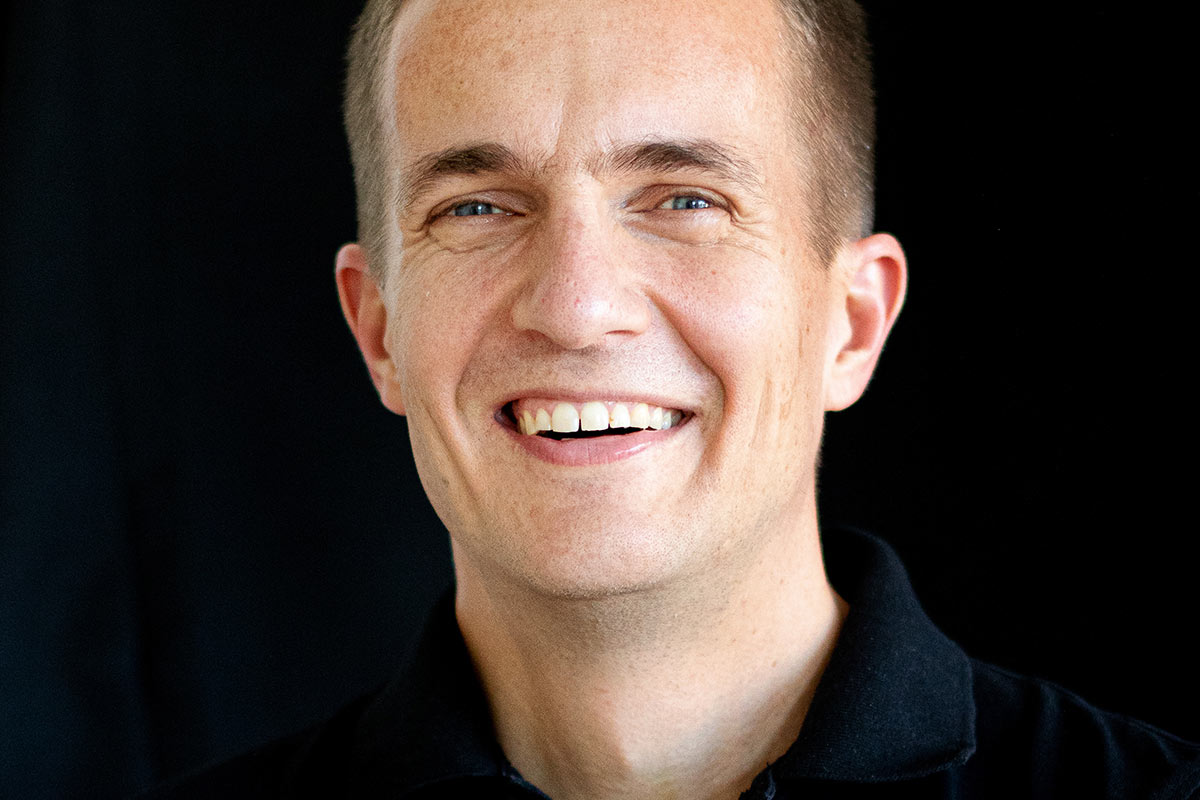
Meet our people
Juha Meronen, CEO at Tori in Finland, truly believes that marketplaces can help changing peoples’ behavior towards a more circular society. At Tory they have many exiting ideas on how. Meet him, Nina Felixsson, Patryk Kurczyna and Simen Eide, some of our Schibsted people.
What if there was an index on the secondhand value for products? And what if that would make people buy more high-quality goods and resell them when they don’t need them anymore?
“We have the data on value and quality to do such an index, and I truly believe that marketplaces for secondhand trade can change consumers’ behavior towards a more circular society,” says Juha Meronen, CEO at Tori,
Schibsted’s marketplace in Finland. At Tori they have concluded that a circular economy is much more than recycling and the flow of material. They are now looking more into the inner circle of this.
“It’s about making people buy things that last longer, repair and modify and then change ownership. If this became a habit it would totally change the game.”
To get there, consumers need to know why they should change their habits – the index showing the secondhand value could be that reason. If a childrens’ chair is still worth 70 percent of the original price when sold on Tori, parents that normally would by a cheaper chair might consider buying the more expensive one if they know they will get this much money back when reselling it.“We have this information, we just need to get it out,” says Juha. Yet. Tori has now initiated a Schibsted project to develop this index.
But Tori has more ideas to make us buy fewer new products – this is somewhat more advanced: what if all the things you own were listed in an inventory. Or perhaps all the things in Finland? If we knew the value of this, it might make us realize that we should use all the things we already have – instead of buying new stuff.
“We need to start thinking differently, and young people are already leading the way. We hear young people saying that buying new things is not in line with their personal brand.”

Years in Schibsted: 5. My dream job as a child: ather Christmas, a priest or a queen
Cords makes designers cooperate
A new UX design system is fundamentally changing how updates and new features can be implemented and shared on Schibsted’s news brands’ digital platforms. It’s so unique that design teams from both Canada and Belgium have already visited and been in contact with the media product and tech team to learn about it. Cords – Core news product design system – was created by UX lead Nina Felixsson and her team.
“We have made a ‘white label’ product that any brand can use and apply their identity to,” explains Nina.
Cords is a framework for design and artwork that contains guidelines for processes and how to work on design and user experience – and it has its equivalent in code. To be even more specific: on an article level it contains design for all components – like headline, media player, image gallery, text etc. But perhaps most important – it has also changed the way the design teams work.
“Cords has become a reason to collaborate on UX design across all our news brands. Now we have weekly meetings to discuss what’s next on the agenda and what we need to improve,” says Nina.

Years in Schibsted: 6. My dream job as a child: Professional football player with Juventus F.C.
A project bigger than GDPR
Patryk Kurczyna joined Schibsted in the first internship program at Schibsted’s tech hub in Poland. Now, six years later, he and the rest of the payment team have launched one of the most complex projects so far: they have aligned Schibsted’s products and systems to the EU Revised Directive on Payment Services (PSD2). We all know about GDPR – the payment directive is even more complex.
It’s all about customer authentication – making sure that you are you when you pay for something online. Now all users are required to authenticate themselves in at least two different ways – this of course means that all services charging users need to make this possible. The payment team in Poland has worked with many stakeholders within Schibsted.
“We had to migrate four million payment methods into a new system in a seamless way. All the users will still use the same payment cards – but we use another system. And at the same time, we had to do it in a fully transparent way,” he explains. So far everything has gone well.
“We have been able to maintain all payments and our clients within Schibsted are onboard.”

Years in Schibsted: 4. My dream job as a child: A combined jumbojet pilot and a developer
Algorithms still have to learn a lot
You might think that all the algorithms that control our digital flows and the things we see online have figured out how we humans work. That is not the case at all.
“The exciting thing is that people are unpredictable.”
Simen Eide is developing features created from machine learning and AI at Schibsted’s Norwegian marketplace Finn. Strong focus areas at the moment are recommendations and personalization.
“So far we have become good at showing people what they have been looking at earlier on the site. The challenge now is to create algorithms that can predict how peoples’ behavior develop, based on interactions – to understand what happens after we’ve shown you a certain picture,” Simen explains. “We know so little still – the potential in this field is huge.”
The good thing is that it’s a very transparent field to work in – experts, universities, and companies are sharing knowledge and results to a large extension.
“The cooperation make it very exciting and we’re getting better all the time and on thinking in different ways to solve the challenges.”
Business trends in short
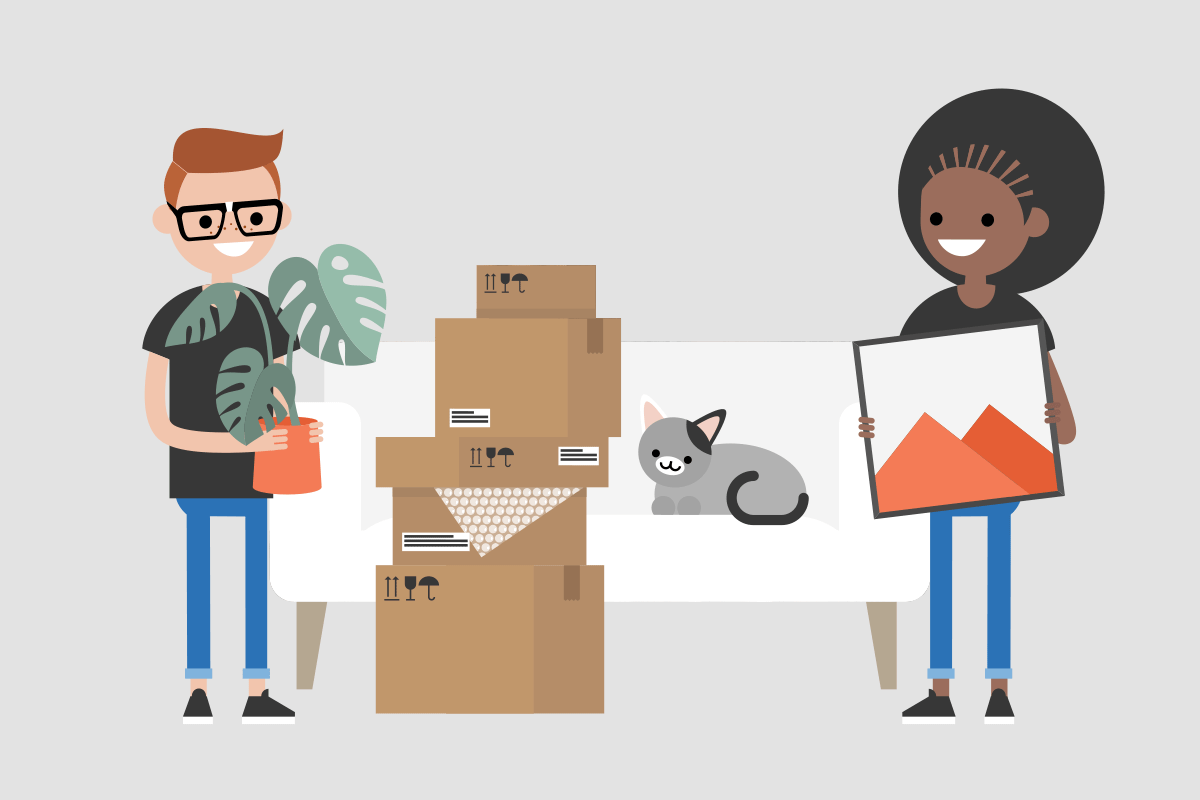
Business trends in short
Lots of things are going on in the marketplace area. Here are some trends summarized by Schibsted Daily Editor Ellen Montén.
Gen Z goes offline to shop
While Millennials are embracing mobile shopping, Gen Z is searching for ways to disconnect from their phones. The younger, digital-native generation has a more complicated relationship with digital services and is more concerned with the impact they have on their mental health. For these young shoppers, visiting physical stores can be a nice way to disconnect from the stresses of social networks and digital channels. This means e-commerce services need to find a way to make online shopping less stressful for their younger customers.
Amazon is a marketplace
2019 was the year Amazon went from being a retailer to being a marketplace. For the first time, the company reported that a majority of its revenue (58 percent!) came from its third-party marketplace, not from its online retail business. The marketplace has helped the company to grow fast, but handling millions of third-party sellers is not easy. There’s a growing black market that offers Amazon marketplace sellers ways to cheat the platform and mislead customers. Some of the cheats include bribing
Amazon employees to gain information or avoid disciplinary actions, while others focus more on removing negative reviews, set record increase in sales volumes, or paying as much as USD 10,000 a month for the top spot in the marketplace’s product search results.
At the same time, a US Court of Appeal has ruled that Amazon can be held accountable for products sold by third-party sellers on its marketplace. According to the ruling judge, Amazon may be liable since its business model “enables third-party vendors to conceal themselves from the customer, leaving customers injured by defective products with no direct recourse to the third-party vendor.”
Ironically enough, US regulators are also investigating whether Amazon is using its market position to hurt its third-party sellers by, for example,
Next up: Resale-asa-service
Resale-as-a-service (Raas) is a new key business area for the fast-growing resale startup Thredup. The company’s Raasplatform offers retailers secondhand shopping, features like resale popup stores and store credits for retail shoppers who sell their secondhand goods. For example, Thredup will help Macy’s to set up pop-up secondhand shops in selected stores. Thredup already receives over 100,000 secondhand items every day, and now it is building a distribution center that can process up to 50 million unique items each year to handle the new inventory from its Raas partners.
People trends in short

People trends in short
Media businesses keep looking into new solutions, models and experiences to create better offerings. These are three interesting trends, summarized by Schibsted Daily Editor Mikaela Åkerman.
Hyper-personalization
No two readers are the same. That is the approach of the idea to hyper-personalize users’ media experience. With the help of modern technologies such as artificial intelligence and machine learning, publishers can experiment with all sorts of parameters to increase engagement and satisfaction with their products. It can be things like finding the best time of the day to deliver content to an individual reader and learning which articles work best to draw readers in. It can also be about testing different layouts and designs, identifying the best channel of communication, and discovering the most effective frequency to deliver content to them. It all comes down to getting to know habits, interests, and preferences of readers as a way to increase loyalty and thereby, hopefully, accelerating subscription growth and reducing churn.
Multi-channel experience
The trend of creating a multi-channel experience, or omnichannel experience, is neither new nor limited to the media industry. All kinds of brands, from retail to banking, are looking to create a seamless user experience across different services and platforms. Most businesses today have marketing campaigns, a website, a blog, and other social network channels alongside their core product. The key, some experts argue, is to make sure they work together and form an integrated, consistent experience. Companies looking to use this technique are encouraged to align their messaging, goals, objectives, and design across each channel and device to enhance their marketing and service efforts.
Editionbased publishing
Forget endless streams of constant news updates. Editions are back in. As a contrast to the fast-paced news flow, which can feel overwhelming at times, readers are looking for boiled-down, summarized, to-the-core news products. News apps with a limited number of stories and newsletters alike are rising in popularity. The behavior goes hand in hand with the observation that readers are increasingly involved in micro-moments of news consumption. Our time is limited, and so is our attention spans. Readers want to feel updated and accomplished in a short amount of time, whether it is while waiting for the bus, standing in line, or having a few moments over during lunch. Studies also suggest that frequency is one of the highest predictors for retention. In other words, making sure people use your service often can be more important than how long they use it for or how deep into it they go.
